Key takeaways
- LinkedIn can be a valuable platform for musicians to showcase their journey, connect with others, and build genuine professional relationships.
- Creating an effective profile involves balancing creativity and professionalism, utilizing a friendly photo, and thoughtfully framing your identity.
- Personalized communication, showing genuine interest in others’ work, and maintaining long-term connections lead to more meaningful interactions and collaborations.
- Successful collaborations thrive on clear communication, respect, and a shared intention to create, enhancing the overall creative process.
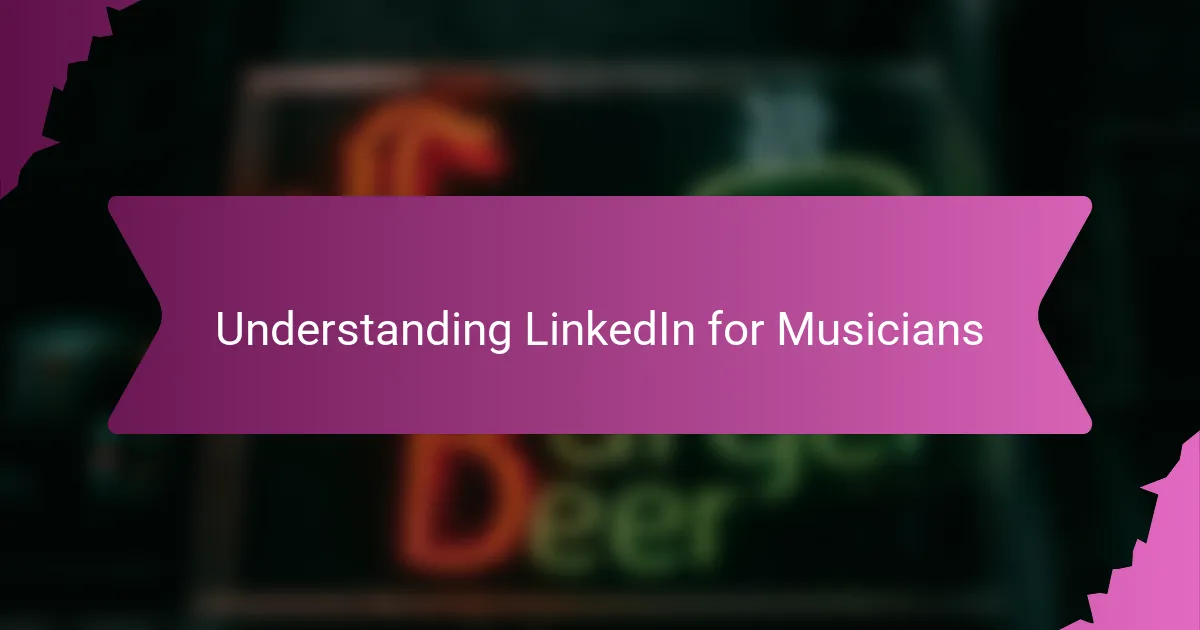
Understanding LinkedIn for Musicians
LinkedIn often feels like a platform for corporate resumes, but for musicians, it can be a hidden gem. I remember initially overlooking it because I thought it wouldn’t suit the creative vibe I was after. Have you ever felt like your artistic work didn’t quite fit into a business-focused site? That was my exact thought until I started seeing how many artists, producers, and collaborators use LinkedIn to connect professionally.
What struck me was LinkedIn’s power to showcase not just skills, but stories behind the music. It allows you to present your journey—training, performances, collaborations—in a way that connects on a deeper level than just a playlist or SoundCloud link. This added context gave me more meaningful conversations with fellow musicians, which felt truly rewarding.
Also, the platform’s emphasis on building genuine professional relationships surprised me. It’s not about flooding your feed with content or chasing likes; it’s about quality connections. Have you noticed how sometimes a well-crafted message can open doors that random comments never will? For musicians, LinkedIn offers that chance to present themselves as serious artists and collaborators.
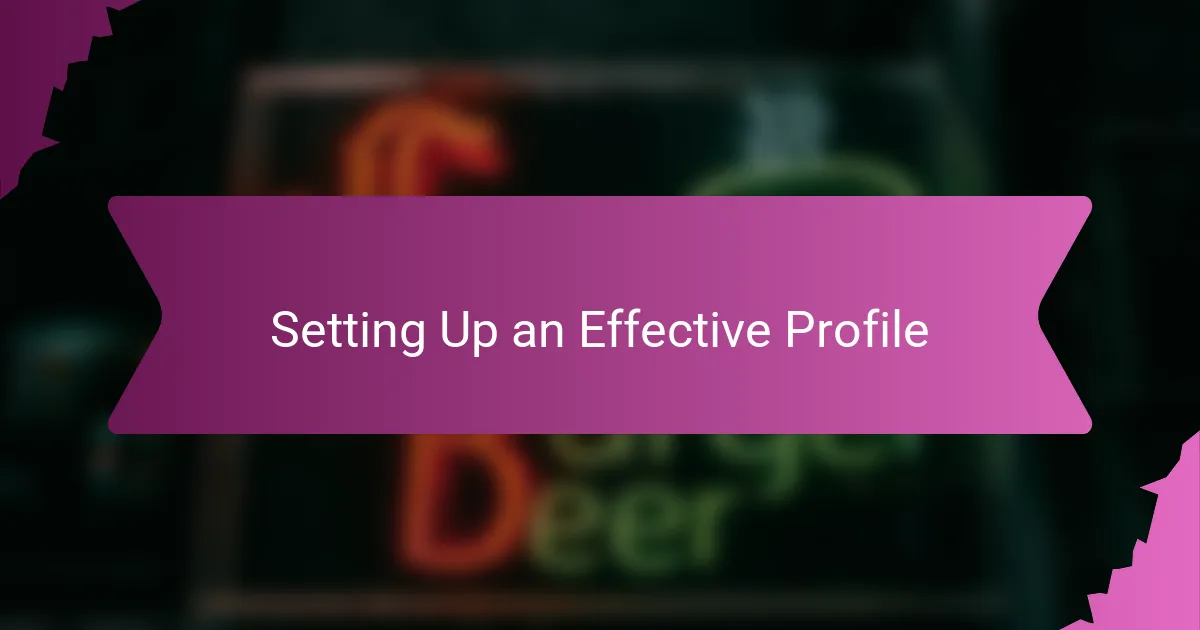
Setting Up an Effective Profile
Crafting an effective LinkedIn profile felt like a puzzle at first. I struggled with how to balance professionalism and creativity without sounding too stiff or too vague. Have you ever wondered how much detail to include about your gigs or education? What helped me was treating my profile like a story—highlighting milestones and the passions behind them rather than just listing facts.
One thing I can’t stress enough is the power of a clear, friendly profile photo. It’s your first impression, and I learned the hard way that a blurry or overly casual picture can push potential collaborators away. Choosing a photo where I looked approachable but confident made people more likely to reach out, which was a game changer.
Then there’s the headline—think of it as your mini-elevator pitch. I experimented with different ways to describe myself, going beyond just “musician” to include roles like “composer,” “collaborator,” or “music project leader.” That small tweak sparked more profile views than I expected, proving that how you frame your identity matters more than you might think.
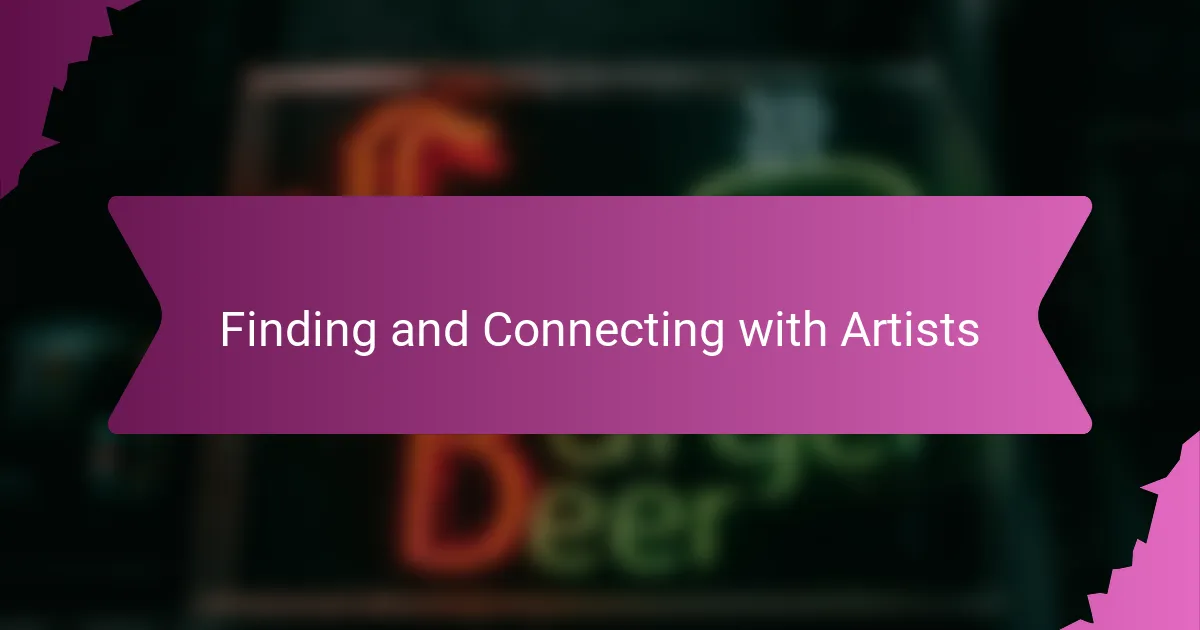
Finding and Connecting with Artists
Finding artists on LinkedIn felt a bit like discovering hidden treasure. I started by using the search filters—genres, locations, and even specific skills—to narrow down who I wanted to connect with. Have you ever tried typing in something as simple as “jazz vocalist” or “electronic music producer” and been surprised at the variety of profiles that popped up? It really opened my eyes to the diversity of talent just a few clicks away.
Reaching out for the first time was nerve-wracking, I admit. I remember drafting messages over and over, wondering if my approach sounded genuine or just another cold pitch. What worked best for me was referencing something specific from their profile—like a recent project or an article they shared—so it felt like a real conversation starter, not just a random request. That personal touch made all the difference in getting responses.
Sometimes, I stumbled upon artists through LinkedIn groups dedicated to music professionals. Joining these communities became a great way to engage casually and show my enthusiasm without the pressure of direct messaging right away. Have you ever noticed how being active in discussions, sharing insights, or commenting thoughtfully can create natural connections? For me, this approach helped build trust before even clicking “connect.”
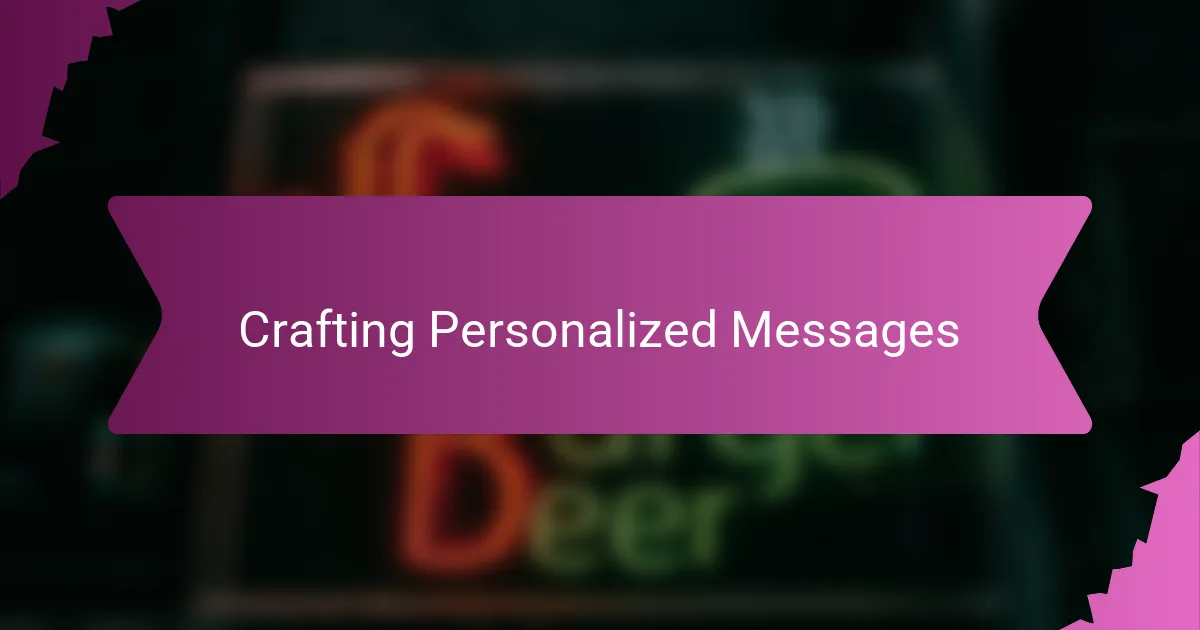
Crafting Personalized Messages
Crafting personalized messages was a game changer for me. Instead of sending generic invites, I made it a point to mention something unique about the artist’s work or background. Have you ever stopped to think how much more inviting a message feels when it shows you’ve taken the time to really look? That sincerity often sparked a conversation rather than just a cold greeting.
I learned quickly that brevity mixed with warmth works best. Keeping messages short but meaningful helped me avoid overwhelming busy creatives, while still expressing genuine interest. Sometimes I’d share how a particular track or project resonated with me—those little details made the connection feel personal and real.
One thing I try to remind myself is not to rush the ask. Early on, I focused on building rapport rather than immediately pitching a collaboration. Asking thoughtful questions about their influences or recent gigs opened doors more naturally. Have you noticed how people respond better when they don’t feel pressured? In my experience, this patient approach led to richer, more rewarding relationships.
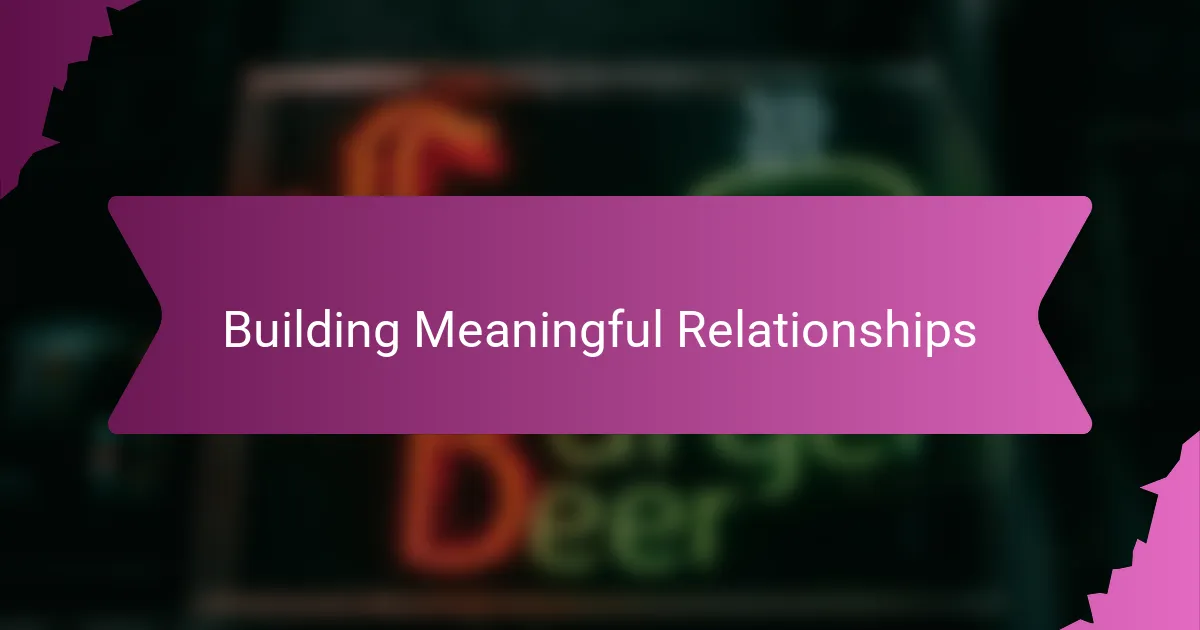
Building Meaningful Relationships
Building meaningful relationships on LinkedIn went beyond just exchanging contacts; it was about truly understanding the artist behind the profile. I found myself paying attention to stories, milestones, and shared values rather than just titles or credentials. Have you ever connected with someone whose journey inspired you and felt like the conversation immediately had depth? That’s the kind of connection that lasts.
I realized that showing genuine interest made a huge difference. Instead of focusing on what I wanted from the relationship, I asked questions and listened to their experiences. This shift in approach built trust and opened up opportunities for collaboration I hadn’t anticipated. It wasn’t always easy—I had to be patient and consistent, but the payoff was worth the effort.
What surprised me most was how occasional, thoughtful check-ins kept connections alive and meaningful. Sending a quick note to congratulate someone on a new project or sharing relevant insights helped nurture these relationships over time. Have you tried maintaining connections this way? From my experience, it’s a small action that creates a lasting impact.
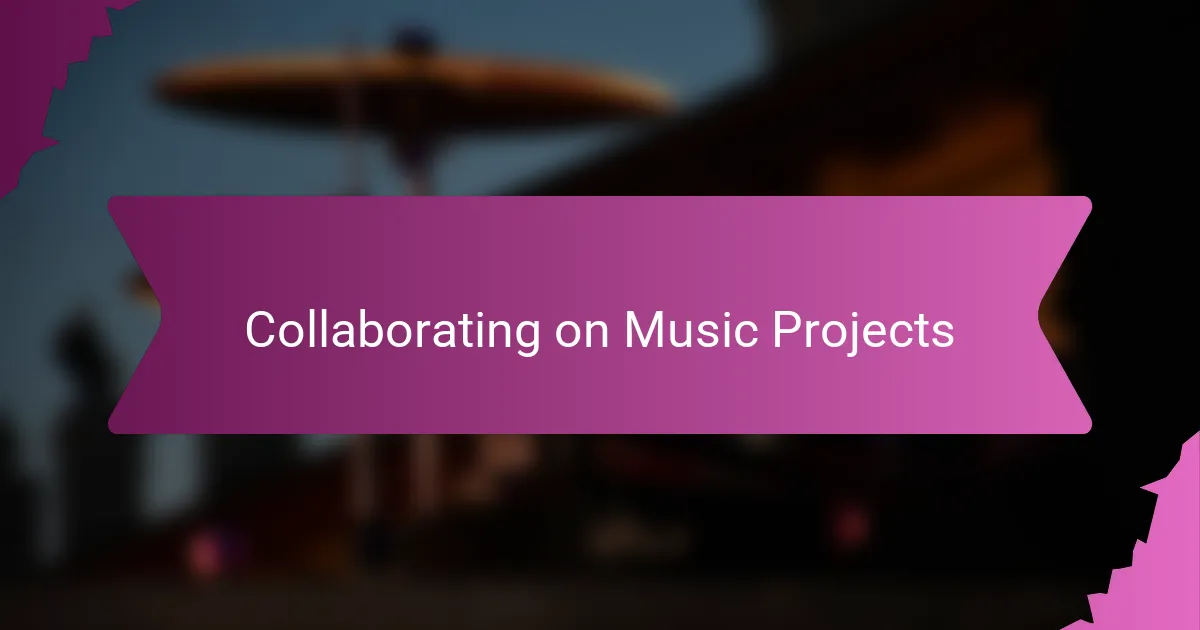
Collaborating on Music Projects
Collaborating on music projects through LinkedIn felt surprisingly natural once I found the right rhythm. I started by sharing ideas and asking questions openly in messages, which helped break down barriers quickly. Have you ever noticed how genuine curiosity about someone’s work can turn a simple chat into an inspiring creative exchange? That was exactly my experience when conversations flowed into brainstorming sessions and, eventually, actual collaborations.
One memorable project began with a casual message complimenting an artist’s recent track. From there, we exchanged sketches, gave feedback, and refined ideas—all without meeting face to face initially. The process taught me how digital collaboration requires clear communication and trust, but it also opens doors to diverse influences that can enrich a project far beyond local boundaries.
What’s more, LinkedIn’s professional setting encouraged me to approach each collaboration with respect and intention. Unlike informal social platforms, there was a shared understanding that we were here to create something meaningful. Have you found that working with artists who take their craft seriously makes the whole creative process more rewarding? In my view, those collaborations not only produced great music but also lasting creative partnerships.
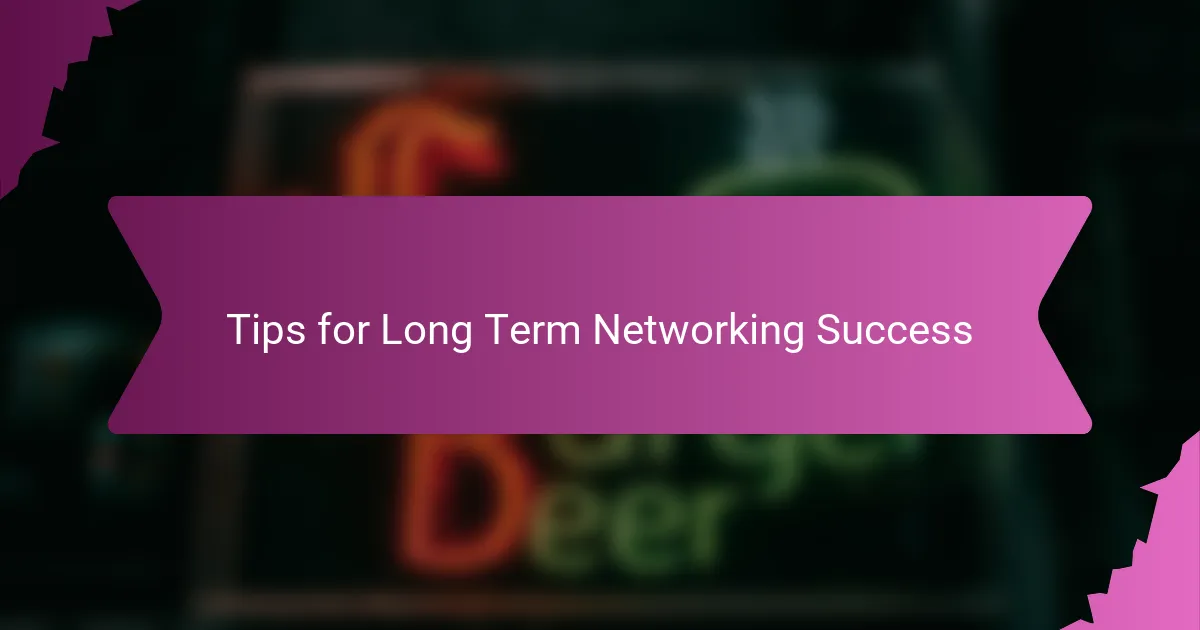
Tips for Long Term Networking Success
One thing I’ve learned is that long-term networking isn’t about rushing connections—it’s a slow burn. Have you ever reached out to someone and then waited weeks without follow-up? I used to think just one message was enough, but regularly checking in with thoughtful comments or congratulations kept those relationships alive and growing over time.
Consistency really is key. From my experience, even small gestures like sharing an interesting article or offering help without expecting anything in return build genuine goodwill. It’s easy to overlook these moments, but they add up and create a foundation of trust that lasts far beyond the initial contact.
And here’s something I found surprising: being authentic matters more than trying to “sell” yourself. I remember once I shifted my focus from pushing collaborations to simply learning about the artist’s journey—that honesty invited richer conversations and deeper connections. Isn’t that what truly sustains a creative network?